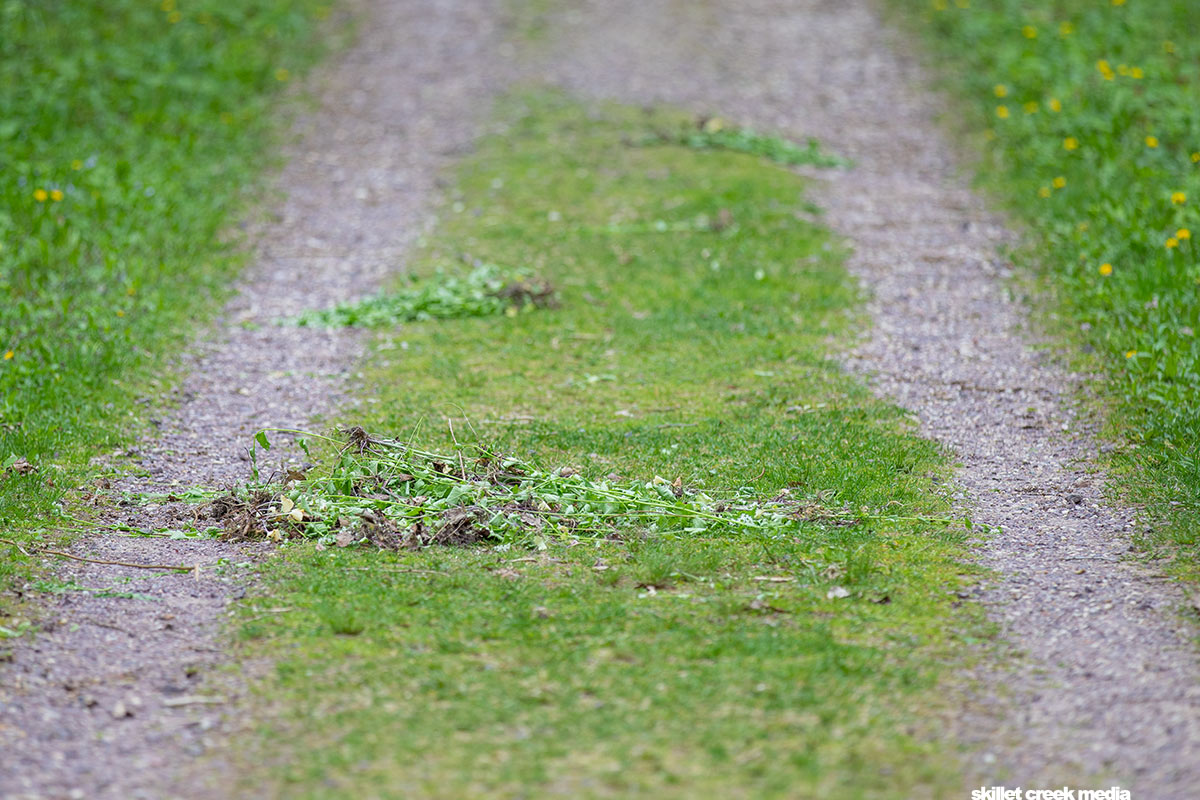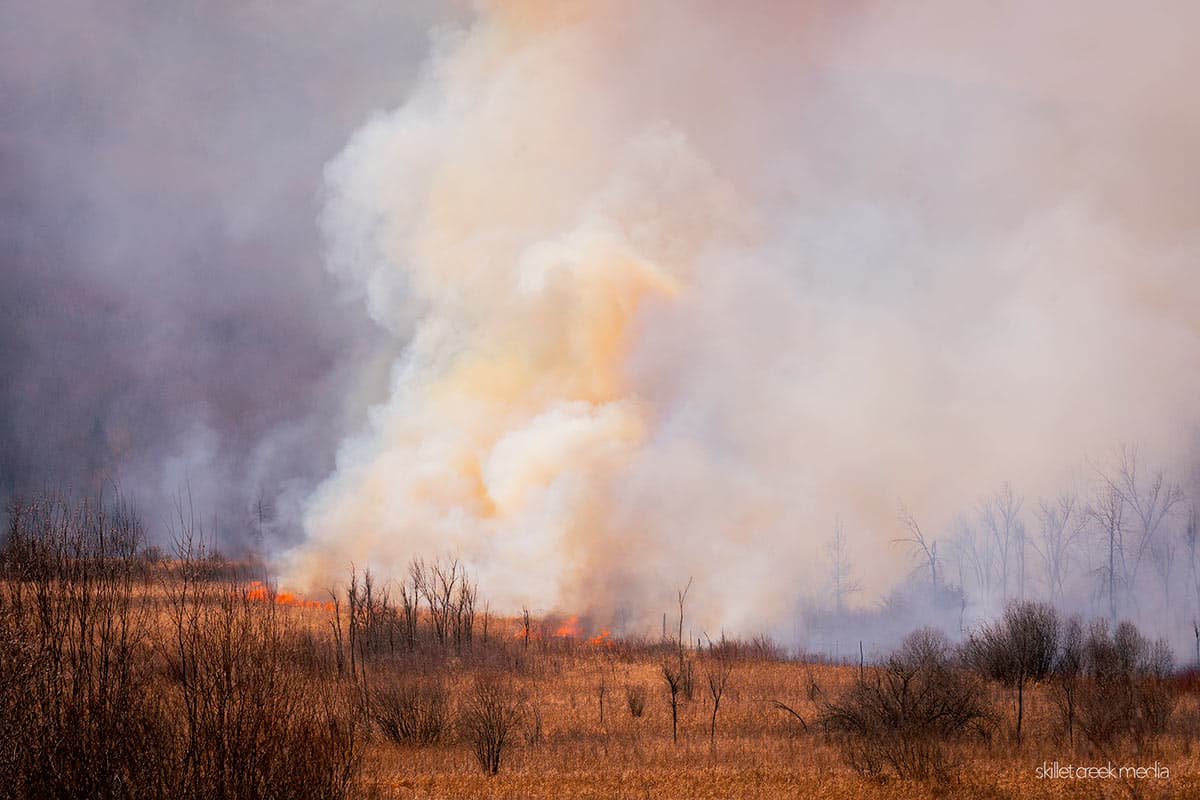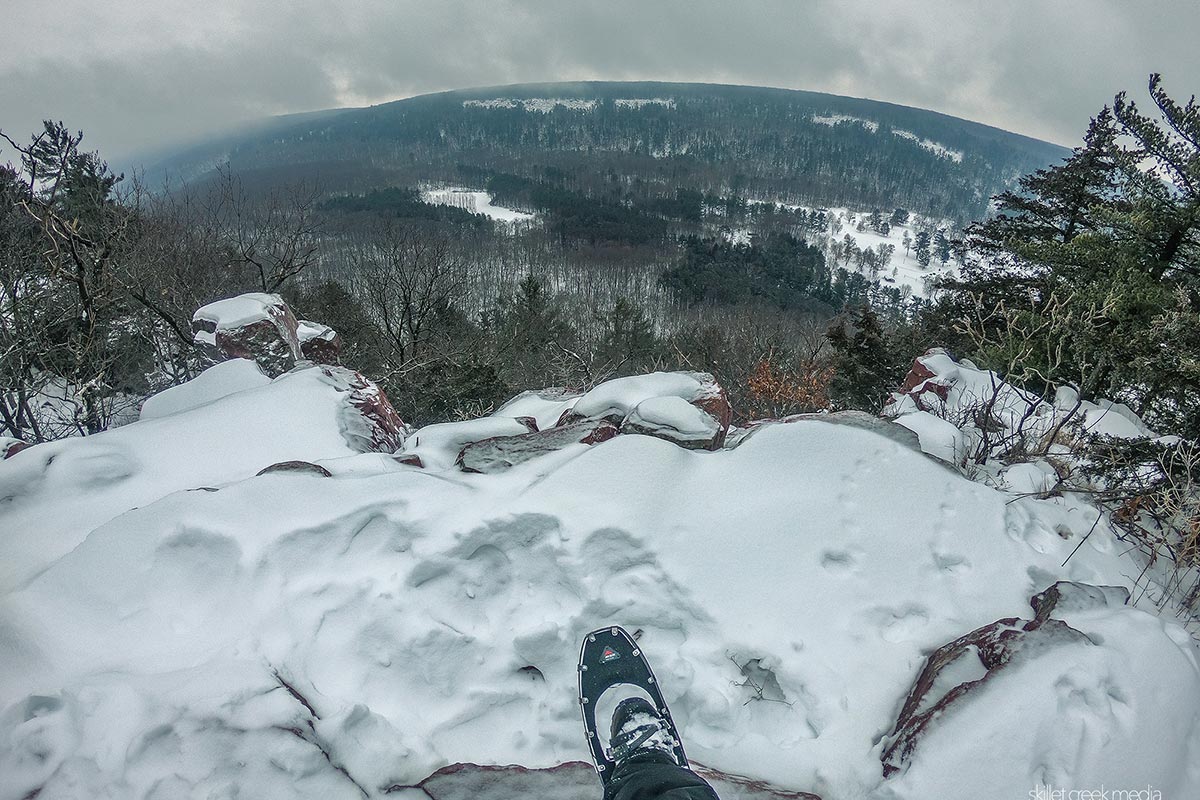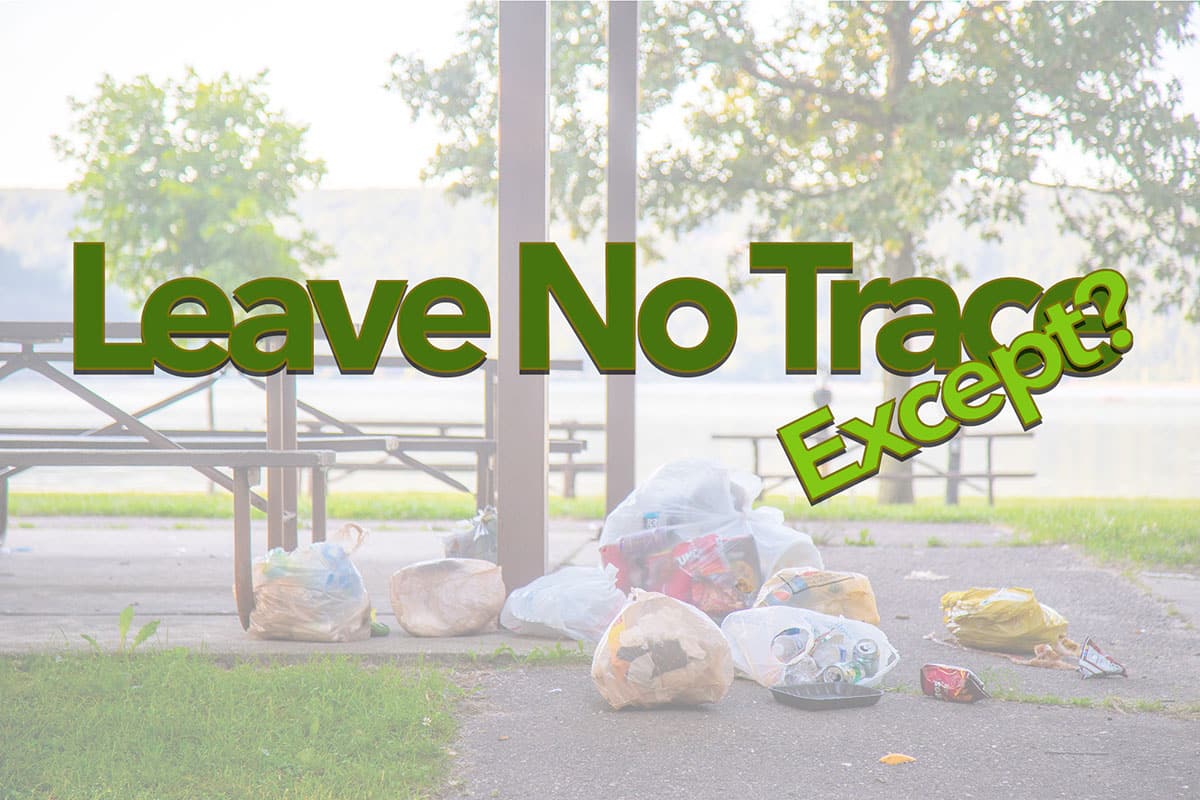Yesterday, March 18th, a prescribed burn was carried out on Devil's Lake State Park's Roznos…

Garlic mustard invades the forest and takes over. It crowds out native plants, flowers, and wildlife food sources. It can even change the soil so that other plants can’t grow! But picking it and tossing it on the trail just spreads its around. You’re not helping, you’re doing more damage!
Check this out!

This photo from just behind the campsites on the west side of Devil’s Lake State Park’s Lower Ice Age Campground shows just how bad garlic mustard can get. This year it seems especially bad. The weather & climate change combined with a lack of folks removing it properly (Due to COVID and other issues.) have left it to run free!
Zombie Plant!
It’s really depressing to see how fast our environment is being ruined by garlic mustard. And I know when I see it pulled on the trails that folks are really just trying to help. But like with all things, education should always come before action. You see, garlic mustard is a bit of a zombie plant, it doesn’t just die when you pick it. Even when you pull it out by the roots! It will still complete the seed making process even after you pull it! Many of those seeds will be washed back to the side of the trail where hundreds of new plants will grow and spread next year. Some will end up in the shoes of other hikers and be spread even further!

These pulled plants will still go to seed and spread the invasion!
The Right Way
Each plant can reproduce at a rate of about 500 seeds, and the seeds can remain viable in the soil for five to seven years. Keep this in mind. It means we have to remove plants AND do it continuously over multiple years to have a real impact. At our home in rural Baraboo we’ve been on a 5-year mission to clear our property. We started with a sea of garlic mustard, and are now down to just a few plants to pull each year. Persistance does work!
But as I said, you have to do it the right way. When hiking, you really have just a couple of options…
1. Take a bag and fill it with pulled plants, then take the bag home and put it in the garbage.
2. Pick the flowers from the plant and put them in a pocket and again dispose of those properly when you get home. (Don’t forget or they’ll get washed in the laundy! I know I’ve done it!) By picking the flower tops, you prevent the plant from making seeds. This can be an easy way to deal with one or two plants that you discover on your hike.
3. Whatever you do, DON’T leave plant matter on the ground.
4. Encourage Volunteer Days – We really need active groups with many hands to make real change out there. On our own we quickly discover we’re fighting a losing battle. Sadly, many properties don’t have active support groups or groups dedicated to the environmental health of the park. In the days of COVID, we can’t do it like we used to, but that shouldn’t stop us from having volunteer days and making a difference!
Thank YOU!
If you have pulled garlic mustard and left it on the trail. I get it and THANK YOU. Really. We know you were trying to do the right thing. Keep at it! Just bag or pocket it in the future and don’t leave it on the trail. Please spread the word! And maybe encourage your local groups to organize socially distanced volunteer days! Every little bit helps!
More Info
Getting rid of invasive garlic mustard! – EMSWCD
Plant Expert Offers Tips On Getting Rid Of Garlic Mustard – PBS
Garlic Mustard – SEWISC

For nearly 2 decades the Skillet Creek blog has focused on 3 main goals; To inspire you to visit and explore the Devil’s Lake region, to help you get the most your visit by sharing tips, events, and other helpful information. Lastly to advocate for our environment & wildlife and talk about how we can keep our natural areas amazing now and into the future! That last goal can sometimes cause controversy, but it’s the only way we can accomplish the first two. – Derrick Mayoleth, Owner.
This Post Has 5 Comments
Comments are closed.




Thank you for all your information. I have often pulled garlic mustard by it roots, removed the flower head and stripped the leaves, leaving the rest of the plant to wilt in the sun on the trail. Can this plant really continue to grow after all this? I don’t generally do this if I see a huge swath of mustard but only if I see a couple rogue plants and I don’t wan them to multiply.
Hi Paulette, You’ve got the right idea. Removing the flowers/flower heads is most important. Roots may help. Leaving leaves is probably OK. Normally if we see just a couple plants we pick all of the flower heads and put ’em in our pockets and toss them in the trash at home. Of course, we don’t know where that trash will end up I suppose… So ultimately we do our best. 😉
What if you pull it before it flowers? Does it still need to be bagged up?
Does it still need to get bagged up if you pull it by the roots before it flowers?
There are always opportunities for plants to re-establish. The best choice is to always remove it from the area. We often will pull small amounts of first-year seedlings, and we always carry them out too, just to be safe.